
Booklover Book Reviews

SEVEN ANCIENT WONDERS by Matthew Reilly, Review
Seven ancient wonders synopsis:.
Also published as Seven Deadly Wonders
Two thousand years ago, it was hidden within the Seven Wonders of the Ancient World. Now, in the present day, it must be found again…
Captain Jack West Jr – part soldier, part scholar, all hero. The odds are stacked against him and his loyal team: nine brave companions taking on the most powerful countries on earth.
From the pyramids of Egypt to the swamps of Sudan, to the Hanging Gardens of Babylon and the boulevards of Paris: the desperate race begins for the greatest prize of all: the power to end the world or rule it.
Note, this title published as ‘Seven Deadly Wonders’ in the US.
Disclosure: If you click a link in this post we may earn a small commission to help offset our running costs.
BOOK REVIEW
An action-packed adventure ride – Indiana Jones, eat your heart out!
Everything I’ve read from Matthew Reilly to date ( Ice Station , Area 7 , Scarecrow , Hover Car Racer ) has just been so enjoyable to read, and Seven Ancient Wonders was no exception.
In this, the first novel in his Jack West Jr. Series, he has created a wonderfully odd bunch of protagonists that you can’t help but barrack for. Reilly certainly doesn’t do anything by halves – this adventure our action heroes find themselves on is colossal. With the quietly confident and courageous Jack West Jr. leading this motley crew, how could they lose?
Reilly himself concedes he doesn’t let grammar or stylistic elements get in the way of a great story. Because of this, his stories are extremely accessible and a fun read for young and old – escapism at it’s greatest. I really like the pictures and diagrams Reilly provides throughout the story, giving the reader a birds-eye view of the traps and mazes our protagonists are facing.
Intensity is maintained throughout the novel with Jack and his crew deciphering clues and navigating traps and mazes at a cracking pace. That is not to say the story doesn’t have heart… he just doesn’t play on the soppy stuff more than required. Reilly’s ability to illustrate the bonds and loyalties of his characters beneath their tough exteriors with a salient observation here and there is his true skill I believe and what really makes us want to follow our favourite characters throughout his series.
If you haven’t read a Reilly, you should – you won’t be disappointed!
BOOK RATING: The Story 4.5 / 5 ; The Writing 3.5 / 5 – Overall 4
Get your copy of Seven Ancient Wonders from:
Booktopia AU Amazon Book Depository OR listen to the audiobook FREE with Audible’s Trial (check eligibility)
About the Author, Matthew Reilly
Matthew Reilly (born 2 July 1974) is a New York Times bestselling Australian action thriller writer . His novels are noted for their fast pace, twisting plots and intense action. Check out Matthew Reilly’s official website .
Check out other titles by Matthew Reilly featured on Booklover Book Reviews, including: The Great Zoo of China , Scarecrow and the Army of Thieves , The Five Greatest Warriors , Hell Island and Seven Ancient Wonders .
* This book counts towards my participation in the Chunkster Reading Challenge (523 pages), Aussie Author Challenge and Finish That Series Challenge.
A booklover with diverse reading interests, who has been reviewing books and sharing her views and opinions on this website and others since 2009.
| Title/Author | |
|
|
It is the biggest treasure hunt in history with contesting nations involved in a headlong race to locate the Seven Wonders of the Ancient World.
4500 years ago, a magnificent golden capstone sat at the peak of the Great Pyramid of Giza. It was a source of immense power, reputedly capable of bestowing upon its holder absolute global power. But, then it was divided into seven pieces and hidden, each piece separately, within the seven greatest structures of the age.
Now it's 2006, and the coming of a rare solar event means it's time to locate the seven pieces and rebuild the capstone. Everyone wants it - from the most powerful countries on Earth to gangs of terrorists... and one daring coalition of eight small nations. Led by the mysterious Captain Jack West Jr, this determined group enters a global battlefield filled with booby-trapped mines, crocodile-infested swamps, evil forces and an adventure beyond imagining.
'Breathless action... explosive stuff.'
| Reader Reviews | ||||||||||||||||||||||||||||||||||||||||||||||||||||||||
Review by Nigel (310107) Rating (7/10) The race is on to locate the capstone from the Great Pyramid of Giza, the source of immense power, split into seven parts and hidden in the wonders of ancient world. With a rare solar event imminent a number of nations, as well as global terrorists, are desperate to claim the prize and all it represents. Among the contestants is a group made up members from eight minor nations who want the prize for good rather than evil. So ensues a frantic quest, led by Captain Jack West, to secure the pieces before a single country or group can assemble the cap stone. Imagine the opening sequence of Raiders of the Lost Ark multiplied ten fold. The deadly traps in each of the seven wonders become more fiendish than the last as each piece is recovered, all being navigated at break neck speed. I must admit to being a little disappointed with the first few chapters. If you have read any Matthew Reilly before you will know his style is never ending action from the first page to the last. In Seven Ancient Wonders this is even more so, with the story starting with a race from the first sentence. The trouble I found was there had been no introduction, however brief, to the characters such that you were racing along with people you didn’t know. A minor point that was later rectified. Another thing that spoilt the work was the overuse of diagrams. In past books these have been used sparingly and at the right places, such as the beginning of the book or at major points of plot change. In Seven Ancient Wonders , particularly in the first half, they are everywhere; I appreciate why as the scenes describing the routes and traps would be overly complicated without. The trouble was they got in the way of the story and I found my thread broken time and again… or to put it another way when I read (as I’ve mention many times elsewhere on the site) after a short time I no longer consciously see the words and everything flows as images in my mind. The problem then was my reading was brought to a sharp halt by a diagram and the flow broken. However, enough moaning, overall another excellent ‘switch off and enjoy’ action fest from the master of the Genre. A must for any Reilly fan and highly recommended for anyone wanting to be entertained. Nigel (31st January 2007) 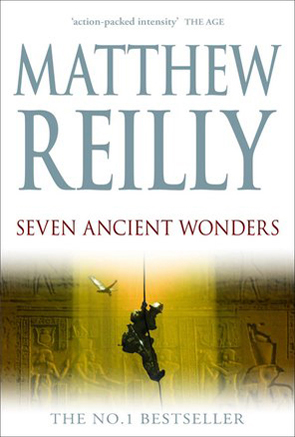 Jack West Jr Series - Book 1
 T here’s a scene roughly half way through Matthew Reilly’s Seven Ancient Wonders when Jack West Junior, a former Australian SAS soldier, strides into the lower hold of the Halicarnassus – a 747 he stole from Saddam Hussein during the first Gulf War and converted into a flying fortress – dressed entirely in black and wearing his back-mounted carbon-fibre wings. Admittedly, Jack’s world and life are a lot to take in, but strangely it is that suit he is wearing, not the mounted carbon-fibre wings, which is momentarily of interest. Zoe, the only adult female of West’s team is waiting for him, also outfitted with the suit and wings. The tight form-fitting bodysuit, our narrator suggests, brought out the best in her slender figure. Lean and shapely, Zoe Kissane was beautiful and fit . That description caused me to pause momentarily as I read, not to wistfully ponder the shapeliness of Zoe Kissane, but to wonder at the necessary form-fitting suit West is also wearing, and our narrator’s silence upon this matter. The thought didn’t distract me for too long, however, since my observation is hardly surprising and the story is diverting. The fact is, Reilly’s high-adventure thriller is unashamedly aimed at young men, and so it should also be of no surprise when I reveal that I was first introduced to Matthew Reilly by a student years ago, whom I found reading Ice Station in my class. Reilly’s voyeuristic pause also reveals something of his narrative voice. One gets the feeling while reading the breathless, break-neck narrative that the author is quite excited by the tale he is spinning; that he is entertaining himself as much as he hopes he is entertaining his reader, and I think this is a good thing in an author. Reilly has a huge advantage in that he knows his audience and he writes entertainingly, which makes up for some of the shortcomings of his style and the preposterous action sequences. The reader has little if any access to the characters’ inner selves. Instead, they are defined by their roles and gutsy determination that is wrapped in moralising tones from an intrusive narrative style. Reilly’s characterisation seems always to happen on the run. In short, there is not much depth to the characters, really. What we know about them rests mostly with their country of origin, their military or academic specialisations and their call-signs . But here’s a problem: there are just too many confusing character references. Setting aside any bad guys and other secondary characters in the book, Jack’s team of nine (initially) is referenced by either their name, their call sign, or a childish alternate call sign given them by the youngest member of the team, Lily, 10. All of these are used interchangeably without any appreciable character building outside the main action. So, here’s my little contribution to the reading experience of anyone contemplating reading this book, my own table summarising Jack West’s team:
The whole first sequence of the novel, the first 124 pages in my edition, is an action sequence with a one-page historical preamble that could have been lifted from Wikipedia. Reilly is willing to bet, it seems, that action is enough to draw his readers along, and it is not until the second and third sections of the book that he slows down momentarily for some much-needed exposition. As the book begins, Jack West leads his group through the crocodile-infested Angereb Swamp in Ethiopia, towards the back entrance of a mountain stronghold. On the other side of the mountain another group is breaking into the stronghold through a different entrance. Jack’s adversaries represent America and prominent European countries. Jack’s group represents a coalition of smaller countries, eager to prevent a dangerous tilt in power in the world. For the prize they seek is one part in seven of the golden capstone that once sat atop the Great Pyramid at Giza. Any country that can obtain the seven pieces, reconstruct them at the top of the pyramid and perform an ancient ritual on the morning of Tartarus (an enormous sun spot that appears once every 4500 years) will have invincible power for a thousand years. This forms the moral justification for the narrative. Reilly’s narrative assumes that it is possible for certain countries to attain ultimate power without danger of moral corruption. Australia, it seems, is a moral centre in world geopolitics and Reilly has no problem in offering Australia as the solution to his existential threat of totalitarian power. This is part of the simplicity of Reilly’s writing, really just wanting to skip over thorny issues he raises which were really only there to inflate the scale of his action. And never mind how all this works, or how the power of the ancient ritual recognises the boundaries and authority of modern geopolitics. This is like a Disney ride, and questioning how the marionettes work would spoil the magic just as pointlessly as thinking about Reilly’s narrative sleight of hand. It’s like that moment in Monty Python when someone says that Camelot is just a cardboard cut-out. You just don’t mention it. So, this is the basis of Reilly’s story. Each of the seven pieces of the capstone were hidden by Alexander the Great or one of his generals after it was removed from the Great Pyramid. The Seven Ancient Wonders were the hiding places of each piece. Now, with six of the seven wonders now lost, the race is on to locate the remains of the wonders and each part of the capstone they hide. Having set aside critical faculties concerning historical misrepresentation and the widely improbable nature of some of the action (is it really possible to shoot a missile out of the air with a gun? If so, is it reasonable to assume this can be done with a degree of repeated accuracy?) one finds it necessary to be tolerant on a number of other points. First, is Reilly’s use of diagrams throughout the book. Reilly’s sequences are so specifically attached to a physical space he imagines that he finds it better to represent the setting visually rather than describe it elaborately and slow the pace of the action. The setting is merely a backdrop for the action, after all, as amazing as some of those settings would be in reality, so I see some justification in this, despite the objections raised by the reviewer in the YouTube video I have posted below. I found myself referring to the diagrams as I read, and I accept that this is just part of Reilly’s style. What I found more difficult is Reilly’s tendency to stretch credulity beyond breaking point. One issue I had with this book was the way he imbues animals with human intention. This is particularly notable with Jack’s peregrine falcon, Horus, that flies shotgun throughout his missions. The bird accompanies him willingly into all manner of dangerous underground situations, which seems unnatural for a falcon. But it gets worse. There’s a scene in which Jack is trapped and calls to Horus to trip the reset switch outside the trap in order to save him. Naturally the bird does all it can to engage with the intricacies of the trap: Flying fast, Horus swooped up the chain-shaft, past the pulley, and down toward the big clay bucket There she landed and hopping around, searched for the reset catch that righted the giant tub. Meanwhile, there is a bunch of pythons slithering out of wall holes in the trap, which were designed to be a part of it, we learn. Don’t question how or why these snakes and their ancestors have been hanging around for thousands of years just to be a part of this trap (in fact, how any of the traps remain working after all this time or how their seemingly one-use designs always reset so perfectly despite their age). All you need to know about these pythons is that they possess a deadly intention commensurable with Horus’s benevolent efforts: The pythons circled, moving in on West and Pooh Bear. Even better, as the danger increases inside the trap, The pythons cut and run – fleeing for their wall-holes, knowing what was about to happen. What? Okay, we know that pythons don’t run because they have no legs, so even mentioning this seems pedantic. But their knowledge of what was about to happen …. How!? Presumably this trap hasn’t been triggered for thousands of years. Even imbued with a human understanding of the situation, these snakes have never seen an example of how the trap was designed to operate. Reilly acknowledges his debt to the Indiana Jones movies in an interview at the end of the book. There are a few sequences in the story which are clearly lifted from the movies: a giant rolling boulder, for instance, and even a scene in which Jack slides under a vehicle, only to remerge. But apart from that, the basis of the story also lies in the ancient world and the action is huge, like the films. But Reilly’s action makes anything in the Indiana Jones movies look entirely plausible. Reilly’s writing reminds me of my days as a teacher, marking the creative writing of many boys who had grown up on action films and video games. It is like high school writing on a grand scale. Nevertheless, I cannot complain too much. I know what to expect from Matthew Reilly. In the past I have read all the Scarecrow series and other books by Reilly, too. I reviewed The Tournament for this site, which I thought was a more restrained effort on Reilly’s part. So, with Matthew Reilly it comes down to this: are you willing to just go along for the ride? Can you suspend your critical faculties and just enjoy it? As for myself, I occasionally like to read something light, especially around the Christmas period, so it would be pointless to give a book like this 1 out of five stars, which it possibly deserves as a piece of writing. I have to acknowledge that writing like this has a place, and that’s how it should be judged. If any readers are interested in Matthew Reilly, his new prequel to the Jack West books Jack West Jr and the Hero’s Helmet , which is only 13 pages and available for free (see the link I have included at the bottom of the sidebar) might be a good place to start. The Seven Wonders of the Ancient World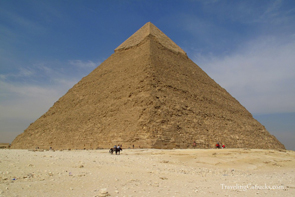 Matthew Reilly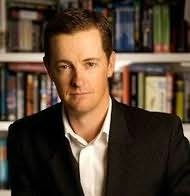 Jack West Jr and the Hero's Helmet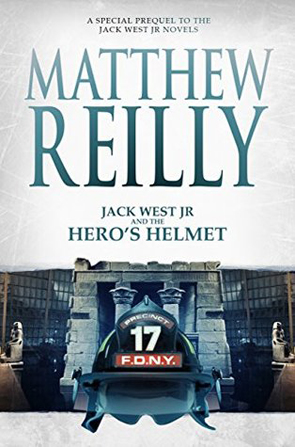 © 2018 readingproject.neocities.org/
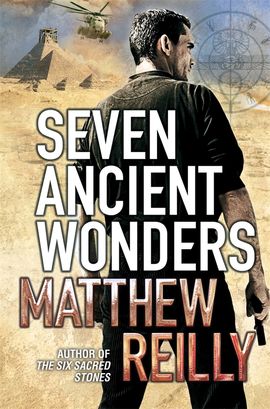 Seven Ancient WondersMatthew reilly, books by matthew reilly.  The Six Sacred Stones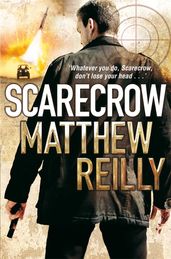 Seven Ancient Wonders Review So in prep for the release of The Four Legendary Kingdoms by Matthew Reilly, I decided to re-read his Jack West novels (starting with Seven Ancient Wonders) and refresh my memory. Holy jesus was it refreshed. Back when I was in year 8 (about five years ago) I had my first taste of Matthew Reilly and Jack West – and fuck me I was hooked so bad. I practically inhaled those three books and as soon as I finished the last one, I would begin again. I’m pretty sure I ended up reading the series about 15 times in a row. I kid you not, my mum banning me from reading those books was the worst punishment and therefore ended my streak. Reading them now reminded me why I was so obsessed with them in the first place. I absolutely love the way in which Reilly incorporated history and action together. I’ve read reviews in which people think that the action and adventure within Reilly’s books is too over the top and unrealistic, but I honestly just loved it. I loved not knowing what was going to happen and I loved the ways in which Jack West and his team got out of sticky situations. Okay, so I just want to commend Reilly on the amount of time and effort he had to put in, in order to have enough research to complete this novel. I love history, and I love action, and I love this combination. In year 9 I actually did a presentation on the resting place of the Hanging Gardens of Babylon and I pretty much used his book as my sole reference. (I got a C but never mind that). I think he did a pretty good job on his world-building, considering the amount of locations and aspects within this novel. Never mind that Jack West is a thirty something year old man and I’m just eighteen, but 10/10 would bang. I literally was in love with him and I was obsessed with him for so long and yeah, jesus. As for the story, I really enjoyed it. I loved the adventure and the history and how it all connects together, and the missions and I guess I just loved it all (can you tell? haha).  Share this:Published by mariemangionjust an 18 year old Australian girl who wishes she could be part of a novel instead of stuck in the real world. View all posts by mariemangion Leave a comment Cancel reply
We will keep fighting for all libraries - stand with us! Internet Archive Audio




Search the history of over 866 billion web pages on the Internet. Mobile Apps
Browser ExtensionsArchive-it subscription.
Save Page NowCapture a web page as it appears now for use as a trusted citation in the future. Please enter a valid web address
Seven ancient wondersBookreader item preview, share or embed this item, flag this item for.
some text closed to the gutter inherent ![[WorldCat (this item)] [WorldCat (this item)]](https://archive.org/images/worldcat-small.png) plus-circle Add Review comment Reviews652 Previews 7 Favorites Better World Books DOWNLOAD OPTIONSNo suitable files to display here. EPUB and PDF access not available for this item. IN COLLECTIONSUploaded by station09.cebu on June 3, 2020 SIMILAR ITEMS (based on metadata)
THE SEVEN WONDERS OF THE ANCIENT WORLDAn extraordinary new journey through history's greatest treasures. by Bettany Hughes ‧ RELEASE DATE: April 23, 2024 A captivating journey with an erudite guide. An illuminating voyage into marvelous historical sites. Underlying Hughes’ fascinating tour of the Seven Wonders of the World, a list compiled in the second century B.C.E, are questions about the nature of wonder itself: “why we wonder, why we create, why we choose to remember the wonder of others.” Devoting a chapter to each, Hughes, author of Istanbul and Helen of Troy , describes in rich detail the Great Pyramid of Giza, the Hanging Gardens of Babylon, the Temple of Artemis at Ephesus, the Statue of Zeus at Olympia—the only Ancient Wonder on mainland Greece—the Mausoleum of Halikarnassos in what is now southern Turkey, the Colossus of Rhodes, and the Pharos Lighthouse at Alexandria. The author imagines how they would have been seen by their original makers as well as what they have meant to those who made long and sometimes arduous pilgrimages to visit them. Around 10 million each year, for example, travel to the Great Pyramid of Giza, constructed 45 centuries ago at the edge of the Libyan desert. More than “a staggeringly audacious and sophisticated act of construction,” the soaring structure of 2.3 million limestone blocks, housing internal burial chambers, is “saturated with symbolic meaning” about the nature of life and death. Of all the Seven Wonders, the Hanging Gardens of Babylon may not ever have existed, although Hughes speculates that they could have been an elevated arboretum within Babylon’s colorful inner walls, irrigated by an innovative water system. Whatever form the gardens took, Hughes asserts, they were expressions of power, both political and technological, the start of “a dangerously domineering relationship with the natural world.” Others of the wonders, too, like the looming statue of Zeus and the tomb, or mausoleum, of King Mausolos, were gargantuan representations of “individual agency and perfect power.” Pub Date: April 23, 2024 ISBN: 9780593686157 Page Count: 432 Publisher: Vintage Review Posted Online: Feb. 24, 2024 Kirkus Reviews Issue: April 1, 2024 HISTORY | ANCIENT | WORLD Share your opinion of this book More by Bettany Hughes  BOOK REVIEW by Bettany Hughes  Awards & Accolades Our Verdict Kirkus Reviews' Best Books Of 2017 New York Times Bestseller IndieBound Bestseller National Book Award Finalist KILLERS OF THE FLOWER MOONThe osage murders and the birth of the fbi. by David Grann ‧ RELEASE DATE: April 18, 2017 Dogged original research and superb narrative skills come together in this gripping account of pitiless evil. Greed, depravity, and serial murder in 1920s Oklahoma. During that time, enrolled members of the Osage Indian nation were among the wealthiest people per capita in the world. The rich oil fields beneath their reservation brought millions of dollars into the tribe annually, distributed to tribal members holding "headrights" that could not be bought or sold but only inherited. This vast wealth attracted the attention of unscrupulous whites who found ways to divert it to themselves by marrying Osage women or by having Osage declared legally incompetent so the whites could fleece them through the administration of their estates. For some, however, these deceptive tactics were not enough, and a plague of violent death—by shooting, poison, orchestrated automobile accident, and bombing—began to decimate the Osage in what they came to call the "Reign of Terror." Corrupt and incompetent law enforcement and judicial systems ensured that the perpetrators were never found or punished until the young J. Edgar Hoover saw cracking these cases as a means of burnishing the reputation of the newly professionalized FBI. Bestselling New Yorker staff writer Grann ( The Devil and Sherlock Holmes: Tales of Murder, Madness, and Obsession , 2010, etc.) follows Special Agent Tom White and his assistants as they track the killers of one extended Osage family through a closed local culture of greed, bigotry, and lies in pursuit of protection for the survivors and justice for the dead. But he doesn't stop there; relying almost entirely on primary and unpublished sources, the author goes on to expose a web of conspiracy and corruption that extended far wider than even the FBI ever suspected. This page-turner surges forward with the pacing of a true-crime thriller, elevated by Grann's crisp and evocative prose and enhanced by dozens of period photographs. Pub Date: April 18, 2017 ISBN: 978-0-385-53424-6 Page Count: 352 Publisher: Doubleday Review Posted Online: Feb. 1, 2017 Kirkus Reviews Issue: Feb. 15, 2017 GENERAL HISTORY | TRUE CRIME | UNITED STATES | FIRST/NATIVE NATIONS | HISTORY More by David Grann  by David Grann  More About This Book  BOOK TO SCREEN  by Elie Wiesel & translated by Marion Wiesel ‧ RELEASE DATE: Jan. 16, 2006 The author's youthfulness helps to assure the inevitable comparison with the Anne Frank diary although over and above the... Elie Wiesel spent his early years in a small Transylvanian town as one of four children. He was the only one of the family to survive what Francois Maurois, in his introduction, calls the "human holocaust" of the persecution of the Jews, which began with the restrictions, the singularization of the yellow star, the enclosure within the ghetto, and went on to the mass deportations to the ovens of Auschwitz and Buchenwald. There are unforgettable and horrifying scenes here in this spare and sombre memoir of this experience of the hanging of a child, of his first farewell with his father who leaves him an inheritance of a knife and a spoon, and of his last goodbye at Buchenwald his father's corpse is already cold let alone the long months of survival under unconscionable conditions. Pub Date: Jan. 16, 2006 ISBN: 0374500010 Page Count: 120 Publisher: Hill & Wang Review Posted Online: Oct. 7, 2011 Kirkus Reviews Issue: Jan. 15, 2006 BIOGRAPHY & MEMOIR | HOLOCAUST | HISTORY | GENERAL BIOGRAPHY & MEMOIR | GENERAL HISTORY More by Elie Wiesel  by Elie Wiesel ; edited by Alan Rosen  by Elie Wiesel ; illustrated by Mark Podwal  by Elie Wiesel ; translated by Marion Wiesel
© Copyright 2024 Kirkus Media LLC. All Rights Reserved. Popular in this Genre Hey there, book lover. We’re glad you found a book that interests you! Please select an existing bookshelfCreate a new bookshelf. We can’t wait for you to join Kirkus! Please sign up to continue.It’s free and takes less than 10 seconds! Already have an account? Log in. Trouble signing in? Retrieve credentials. Almost there!
Welcome Back! Sign in using your Kirkus accountContact us: 1-800-316-9361 or email [email protected]. Don’t fret. We’ll find you. Magazine Subscribers ( How to Find Your Reader Number ) If You’ve Purchased Author Services Don’t have an account yet? Sign Up. Server BusyOur servers are getting hit pretty hard right now. To continue shopping, enter the characters as they are shown in the image below. Type the characters you see in this image: Common Sense Media Movie & TV reviews for parents
Or browse by category:
Common Sense Selections for Movies 50 Modern Movies All Kids Should Watch Before They're 12
 Best Kids' Shows on Disney+ Best Kids' TV Shows on Netflix
 8 Tips for Getting Kids Hooked on Books 50 Books All Kids Should Read Before They're 12
Common Sense Selections for Games
 Nintendo Switch Games for Family Fun
Common Sense Selections for Podcasts Parents' Guide to Podcasts
 Social Networking for Teens Gun-Free Action Game Apps  Reviews for AI Apps and Tools
 Parents' Ultimate Guide to YouTube Kids YouTube Kids Channels for Gamers
 Screen-Free Activities for Kids and Teens to Enjoy Over the Summer
 Multicultural Books YouTube Channels with Diverse Representations Podcasts with Diverse Characters and StoriesSeven wonders book 1: the colossus rises, common sense media reviewers.  Super-teens clash with ancient history in OK series start.  A Lot or a Little?What you will—and won't—find in this book. Kids will be introduced to the Seven Wonders of th Trust, teamwork, bravery and believing in yourself Jack feels like the underdog next to his high-achi The four main 13-year-old characters have a geneti There's embarrassed near-nudity when Cass' Symbols are used for one swear word when Jack gets A few mentions here and there, such as The Simpson Parents need to know that we recommend The Colossus Rises for kids 10 and up -- an age rating that's a couple of years older than the publisher's recommendation -- simply because the story is more complicated than most books for 8-year-olds and would be harder for them to follow. The fantasy violence… Educational ValueKids will be introduced to the Seven Wonders of the Ancient World in this series, starting with the Colossus of Rhodes. The myth of Atlantis and its sinking is also discussed in some detail, as is genetic mutation (an imaginary one in this case) and rock climbing technique. Solving puzzles to follow clues involves word and math games. Positive MessagesTrust, teamwork, bravery and believing in yourself are overlying messages. Trust in adults and their motivations seems the hardest to achieve, especially when they can be so cagey. Positive Role ModelsJack feels like the underdog next to his high-achieving friends, but becomes a strong leader of the group, helping them to come together and get out of some really sticky situations. Aly is the only girl -- incredibly tech savvy with pink hair, so refreshingly she defies stereotypes. Cass is brilliant but wimpy for unknown reasons. Marco is the enthusiastic action hero of the foursome. Professor Bhegad doesn't make the best mentor for the teen group he's assembled; he withholds information from them repeatedly, which makes his motivations suspect. Violence & ScarinessThe four main 13-year-old characters have a genetic defect that can kill them without a series of treatments, and they are secreted from their homes before they die; even with treatments they're told they probably won't live past 14. Jack and Aly are especially distressed to be separated from family, with talk about Jack's mother dying years before. Two of the foursome almost die from encounters with mythical beasts, and are thought dead by their friends and mourned. The two rescue attempts and one near-escape find the characters fighting mythical beasts, the giant colossus, "monks" with guns, a capsized boat, and fire and near-suffocation from the smoke. Jack repeatedly dreams of his own death by falling into an abyss. Did you know you can flag iffy content? Adjust limits for Violence & Scariness in your kid's entertainment guide. Sex, Romance & NudityThere's embarrassed near-nudity when Cass' pants burn off and he's forced to run around in Simpsons boxers. Did you know you can flag iffy content? Adjust limits for Sex, Romance & Nudity in your kid's entertainment guide. Symbols are used for one swear word when Jack gets hit on the head. Did you know you can flag iffy content? Adjust limits for Language in your kid's entertainment guide. Products & PurchasesA few mentions here and there, such as The Simpsons , Converse, Kit Kat, Skittles, and Skype. Parents Need to KnowParents need to know that we recommend The Colossus Rises for kids 10 and up -- an age rating that's a couple of years older than the publisher's recommendation -- simply because the story is more complicated than most books for 8-year-olds and would be harder for them to follow. The fantasy violence is about average for the level of action and adventure and includes fights with giant ancient beasts, a near-drowning, a big fire, and more. The four teens' brushes with death are many -- two are thought dead during their adventures and all aren't expected to live long thanks to a genetic marker that makes them both exceptional and physically vulnerable. Jack makes a good leader of the group, and Aly, the only girl, is a tech genius and kind of punk -- a nice change. Where to ReadCommunity reviews.
Based on 3 parent reviews Poor character developmentBest book my son has read, what's the story. Thirteen-year-old Jack is headed to a math test when he blacks out in the school parking lot. Could it have anything to do with that upside-down \"V\" mysteriously appearing on the back of his head? The shady Professor Bhegdad is sure he possesses a rare genetic marker that sharpens his mind immensely ... right before it kills him. So sure that he secretly whisks Jack away to an isolated island to treat him and a few other \"V\"-clad survivors. Jack meets Cass, who's a walking GPS; pink-haired Aly, who can hack any database she sets her mind to; and Marco, who sports superhuman strength and battle smarts. Their backgrounds may be different, but they certainly agree on one thing: Professor Bhegdad isn't telling them all his reasons for bringing them there. And the ancient power hidden on that very island is just one of his many secrets. Is It Any Good?Fans of Percy Jackson and the Kane Chronicles may ask themselves: The formula's the same (modern teens meet mythology and big adventures), so why aren't I absolutely loving this? The adventures are still big, with some scary creatures and clues to puzzle out. But the characters need some fleshing out -- some moments of reflection so we can know them well enough to get excited about traveling the world with them, finding cool ancient stuff for what's probably six more books. Instead, the author piles on another mysterious angle to overcomplicate the plot or takes the teens back -- again -- to wondering why they're on the island and can they really trust the crazy professor? Who knows? But it's more important for readers to put their trust in the main characters first. Talk to Your Kids About ...What drew you to this series? The compelling cover? All the marketing to fans of Percy Jackson -style fantasies? Do you look forward to reading Seven Wonders Book 2 ? Why or why not? There's plenty to read about the Ancient Wonders of the World and why they were considered so special. Books like this one are fun to follow up with a bit of research. Book Details
Did we miss something on diversity?Research shows a connection between kids' healthy self-esteem and positive portrayals in media. That's why we've added a new "Diverse Representations" section to our reviews that will be rolling out on an ongoing basis. You can help us help kids by suggesting a diversity update. Suggest an UpdateOur editors recommend.  The Red Pyramid: The Kane Chronicles, Book 1 The Lightning Thief: Percy Jackson and the Olympians, Book 1 The Alchemyst: The Secrets of the Immortal Nicholas FlamelRelated topics.
Want suggestions based on your streaming services? Get personalized recommendations Common Sense Media's unbiased ratings are created by expert reviewers and aren't influenced by the product's creators or by any of our funders, affiliates, or partners. The wonder of it all – revisiting antiquity’s ultimate bucket list with Bettany Hughes A view of the great pyramids at Giza, Egypt. Photo: Getty The number seven, as Bettany Hughes points out in this interesting though often flawed book, was special to our ancestors. Think of the seven sins, seven archangels, seven cardinal virtues, seven daughters of Atlas, seven islands of Atlantis – or here in Ireland, the reputed healing powers of the seventh son of a seventh son. Join the Irish Independent WhatsApp channel Stay up to date with all the latest news Latest Book ReviewsWe will not be saved is nemonte nenquimo’s powerful tribal testimony in climate and humanitarian crisis.  The Challenger shuttle disaster: How Nasa’s top minds failed its crew ‘Donal Ryan is so good he made me think I’d have to stop writing’ Chilling tale turns the attic into a terrifying place An autobiographical eye on the rituals of loss and grief Natalie Sue’s sparky debut I Hope This Finds You Well presents an all-too familiar toxic office Not just a pretty place, why gardens are the frontlines in the battle to save biodiversity A sparkling portrait of the places that inspired Yeats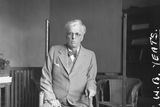 Fintan O’Toole’s teacherly guide to Shakespeare has its own tragic flaws Football scouts embark on a neocolonial mission Top Stories ‘She didn’t execute the race plan’ – ‘Coach Flo’ says Rhasidat Adeleke needs to learn how to burn off rivals live | US Open: Rory McIlroy battling well on tough day at Pinehurst Tanya Sweeney: My Irish Stand-off over paying a €30 coffee bill got physical — and blood was drawn ‘I shouldn’t be in prison, I should be back in my job,’ says Enoch Burke as he launches legal bid for release from prisonLatest news more, sean o’connor: the sight of lee carlsey at an ireland match gave a glimpse of what might have been, rare twin elephants in thailand receive monks’ blessings, gaa team news: james mccarthy named on dublin bench to face old foes mayo, woman had husband pose as her 110-year-old dead father-in-law to hide €270k pension theft, putin pledges ceasefire in ukraine if kyiv withdraws troops and drops nato bid, barclays steps back as sponsor of download, latitude and isle of wight festivals, finglas brothers glen ward and eric o'driscoll accused of possessing and discharging firearms to face trial, in the footsteps of the first bloomsday, ‘virtual wards’ to monitor patients at home rolled out as hospital waiting lists grow, watch: daniel mcdonnell runs the rule over all the groups in our video preview of euro 2024.

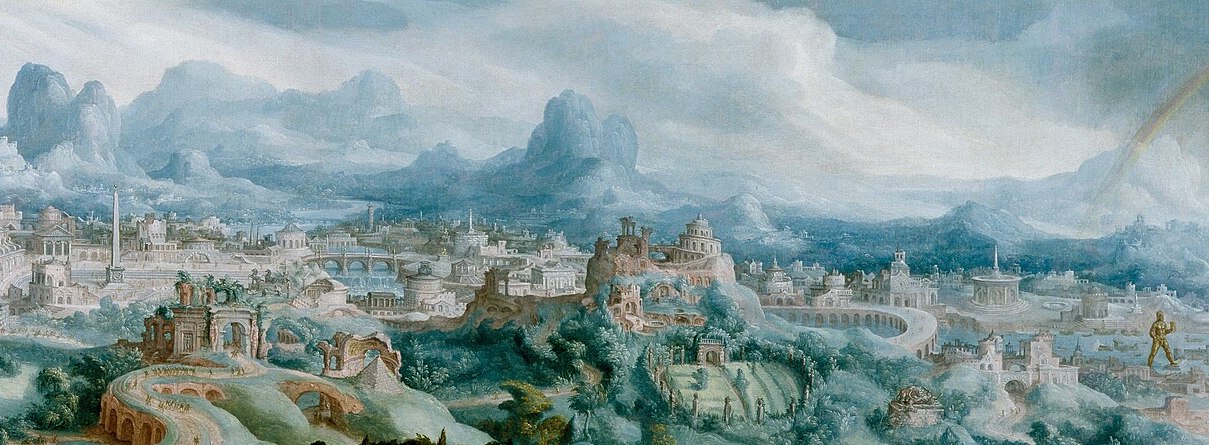 What Makes a Wonder? On the Human Need to Map Out Monumental GreatnessBettany hughes considers the creation and construction of the ancient world. Wunder, Old English “A marvelous thing, miracle, object of astonishment.” * In 1303 CE, a monstrous earthquake ripped through the Eastern Mediterranean. The trauma shook glittering casing stones loose from the Great Pyramid at Giza in Egypt—the most ancient of our Seven Wonders—and brought the remains of the youngest, the towering Pharos Lighthouse of Alexandria, crashing to the ground. The Great Pyramid embodied enormous effort for the sake of one, virtually omnipotent man. Alexandria’s Pharos Lighthouse had been a public beacon to keep travelers from four continents safe, and to announce a repository of all the knowledge that was possible for humankind to know. But across that complex arc of experience, spanning nearly 4,000 years, from the vision of a single, almighty human to a network of human minds, no human-made Wonder could prove a match for the might of Mother Earth. The Seven Wonders of the Ancient World were staggeringly audacious impositions on our planet. Incarnations of the beautiful, mournful, axiomatic truth of our species that we are compelled to make the world in our image and to modify it to our will. They were also brilliant adventures of the mind, test cases of the reaches of human imagination. The Seven Wonders of the Ancient World walks through the landscapes of both ancient and modern time; a journey whose purpose is to ask why we wonder, why we create, why we choose to remember the wonder of others. I have traveled as the ancients did across continents to explore traces of the Wonders themselves, and the traces they have left in history. My aim has been to discover what the Seven Wonders of the ancient world meant to “them”—to our relatives across time—and what they do and can mean to us. The word wonder is pliable: wonder is both a phenomenon and a process. Wonders are potent because wondering helps us to realize that the world is bigger than ourselves. The wonderful generates interest, and frequently empathy, and that interest and empathy nourishes connection. We process and internalize these connections. Intellectually and emotionally, via the physical process of thought, we realize we are, truly, one world. So we seek wonders—natural, man-made, philosophical, scientific, whether they are near or far—as a socializing act. How then do we collectively decide what is wonderful? One time-honored way is to create Wonder-lists. There have been many wonders at many times. There are wonders of the ancient, the modern, the engineered and the natural worlds. At the last count, seventy monuments have been officially claimed as catalogued wonders of history. There is now a vogue for the nationalism of wonders—the Seven Wonders of Everywhere, from Azerbaijan to Zimbabwe, from Canada to Colombia. Spiritual too, the Seven Wonders of the Buddhist, Islamic, Hindu and Christian faiths have all been eagerly gathered together. But there was one international wonder-selection which seems to have formed a blueprint for all others. The discovery, and indeed survival, of this fragmentary alpha-to-omega inventory is close to miraculous. Compiled in the second century BCE, the earliest extant recording of a Seven Wonders of the World compendium was found on a scrap of papyrus used to wrap an ancient Egyptian mummified body. This mummification wrapping—cartonnage—was itself discovered in an excavation at Abusir el-Melek in Central Egypt. Close to modern-day Beni Suef, Abusir el-Melek is a Nile river-city which was once an ancient capital of Upper Egypt, and which has endured as a stolid commercial centre, manufacturing linen and carpets. If one sails down the Nile today, the flourishing settlement announces its presence via a cement factory. From afar, clouds of cement-dust, somewhat ironic ally, reveal the Nile waters and desert all around with the appearance of a romantic late-eighteenth-century watercolor. The ancient city, called se Hut nen nesut by the Egyptians (known as Hnes in Coptic, and renamed Heracleopolis Magna by Greeks and Romans), enjoyed its own prosperity—a place that was rich in both lives and afterlives. The many burials on the Nile’s sandbank-shores here privileged a cult of the Ancient Egyptian god of life and death, of fertility and immortality—the god named Osiris. The hero-gods Herishef (“Ruler of the Riverbanks”) and Herysfyt (“He who is over strength”) were also adored here—the latter a figure associated by Egypt’s Greek rulers of the Hellenistic Age with their own hero Herakles. And wrapping up one of the thousands of entombed humans found at Abusir el-Malek, in the form of mummification material, inked onto flat-reed paper—was that earliest, extant Wonder-list. Now known as the Berlin Papyrus 13044, the Laterculi Alexandrini was created 2,200 years ago. The Laterculi Alexandrini (the name laterculus was used from late antiquity onwards to denote an inscribed tablet or a stone publishing information in a list or calendar form) is a fragmentary list of many lists—not just of the Seven Wonders of the World, but a cornucopia of sevens: the seven most important islands, the seven most beautiful rivers, the seven highest mountains, the seven best artists (the catalogue continues)—a kind of vital, ancient Who’s Who , if you like, or antiquity’s Buzzfeed. Almost certainly written in the city of Alexandria, the Laterculi Alexandrini papyrus comes from a time and place with immense confidence. The warrior-king Alexander the Great, the ultimate colonizer who rose up from Macedonia to seize lands from Egypt to India (desiring an empire that stretched further—from the edge of the Atlantic to China) had prematurely died while effecting his world takeover, and his vast territories were being divvied up by his generals—once loyal, but now bickering amongst themselves. The original Seven Wonders list was therefore a product of the Hellenistic Age, that baggy epoch spanning the death of Alexander the Great (Alexander III of Macedon) in 323 BCE and the death of Cleopatra of Egypt (Cleopatra VII of the Ptolemies) in Alexandria itself in 30 BCE. This was a time when Greek culture had seeped around the edges of the world, and was also being actively forced upon it. So we find prototypes of the palaces, temples and tombs from Alexander’s birthplace at Pella in Northern Greece also turning up in exact, mathematical replicas from Sudan in Africa to Sogdia (an ancient civilization ranging across modern-day Uzbekistan, Turkmenistan, Tajikistan, Kazakhstan and Kyrgyzstan). The great Buddhist kings of what is now Nepal and Northern India, such as Aśoka, left inscriptions of Buddhist philosophy outside towns like Kandahar (named for Alexander) in modern-day Afghanistan, in a Greek script and language. Homer was quoted in Pakistan, and the tragedies of Sophocles, Aeschylus and Euripides played to audiences in Susa in modern-day Iran, on the shores of the Caspian Sea and in Babylon—close to Baghdad, in what is now Iraq. Alexander the Great, responsible for this fervor for Hellenic culture, thought nothing was impossible. His famed exclamation, “The world is not enough!” only goes part of the way to encapsulate his appetite and his drive. Insisting on literary, athletic and cultural contests wherever he went, carrying a copy of Homer’s Iliad annotated by Aristotle, one of his inspirations was the legendary hero Perseus (a mythological character claimed by Alexander’s family as an ancestor), whose life-story taught that our greatest fear is of fear itself. In a remarkable Hellenistic tomb at Derveni in Northern Greece, uncovered by accident during modern-day road-widening, a coin minted by Alexander has been unearthed with an image of Herakles’ club on one side and the goddess of wisdom, Athena, on the other. Alexander saturated his campaigns with a kind of pugilistic optimism and belief in the power of the pen and the sword. The Hellenistic world followed suit, sponsoring a worldview that was at once aggressive and aspirational, appetitive and erudite. Belief in astrology—that pseudo-science which could allow all things to be a possibility—escalated, and the worship of the goddess of Tyche—Good Fortune—was fostered in the majority of Hellenistic cities. Travel through many sites of the Hellenistic Age, from King Antiochus I’s tomb-burial on the top of Mount Nemrut in Eastern Turkey to incense-trading cities in Oman, and you find stubborn, weathered representations of Tyche, the good luck goddess. Just as neuroscientists now tell us we invent our memories to match a narrative of ourselves, so Hellenistic mythmakers rewrote global history to match their self-belief (declaring, for example, that Buddha was in fact a descendant of a Greek soldier who invaded India with the god of wine and ecstasy, Bacchus-Dionysos—a deity whose trail Alexander the Great would endeavor to follow). The Hellenistic Age gaslit contemporaries and future generations into experiencing the world through an Hellenic lens. It is an influence to be both feared and admired. Alexander gave his name to at least fifty cities across Asia, Africa and Europe. Scholars and scientists in Alexandria invented extraordinary things: the first known steam-engine, the first computer, geometry, longitude and latitude—a calculation that divided the earth into the climate zones we still use today, as well as a means to accurately measure the circumference of the earth. And in the other Alexandrias around the world they took note, took interest, and took their cue to explore and draw inspiration from the wonders of the world that felt relevant and cogent. The Seven Wonders concept reinforced an exciting, and nourishing, notion that humans could make the impossible happen. The Laterculi Alexandrini opens with an imagined conversation between Alexander the Great and the gumnosophists— literally, the naked-sapience-speakers—of the Indian sub-continent about the nature of rule. Surely referring to the Sadu, to Brahmin peripatetics, and to the Buddhist monks of Bactria (men described as being vegetarian and living naked), these gumnosophists from the East were considered by the Hellenistic world to be primordial wisdom-makers, men who understood the broadest possible sweep of human experience (and who, interestingly, advised Alexander the Great that the most powerful man on earth is the man whose power is not feared). The Greek biographer Plutarch also tells us that Alexander met these wise men, the exacting ruler being counseled, “hard questions have hard answers.” Their presence at the top of this fragmentary list of our ancient Wonders is significant: the Seven Wonders compilation was a catalogue not just of arcane or passing interest, it was being flagged as an exercise in understanding. The Seven Wonders list was therefore conceived as an interrogation of the nature of power, and as an advertorial, a boastful guidebook to the “known world”—that is, the world known, and colonized, by the Hellenistic Greeks and their allies. All the Wonders had connections one to the other, and all the locations could be physically visited, with relative ease. The Seven Wonders of the Ancient World—a list which varies but is most typically the Great Pyramids at Giza, the Hanging Gardens of Babylon, the Statue of Zeus at Olympia, the Temple of Artemis at Ephesus, the Mausoleum of Halikarnassos, the Colossus of Rhodes, and the Pharos Lighthouse of Alexandria, the majority of which had a direct connection to Alexander the Great and to his family and followers—immortalized a celebration of Hellenism as well as of native inspiration, and the reach of Greek culture in the star-stream wake of Alexander. So who arbitrated this protean, impactful inventory of seven? Callimachus of Cyrene (born in Libya but also based in Alexandria) compiled A Collection of Sights in Lands throughout the World at the time that one Wonder, the Pharos Lighthouse, was being raised, but this work has been lost to time. The oldest entire seven-strong list that we know of was almost certainly compiled by a poet born on the bright, wide coastline of Lebanon, a man called Antipater of Sidon. Antipater traveled to Rome, and he composed his wonder-verse sometime between 140 and 100 BCE. The poem features both the walls of Babylon and the Hanging Gardens of Babylon but ignores the lighthouse at Alexandria. This might seem odd given that Alexandria was the epicenter of the Hellenistic world and that the Pharos Lighthouse was such an extraordinary existing construction. Perhaps, though, the Pharos was just too obvious. The Seven Wonders list came from the vantage point of the lighthouse—a beam seeking out and illuminating Wonders that could be reached by a journey. It is almost as if the Pharos Lighthouse was, as it were, base camp for Wonder quests, so familiar to authors, many of whom were based in Alexandria, that it was simply a given. Other Wonder-list versions followed. Diodorus Siculus, a Greek historian of the first century CE who wrote a vast History of the World , added an obelisk in Babylon to the list. Pseudo-Hyginus, another Roman-period author, in his Fabulae omits the Hanging Gardens of Babylon. The geographer Strabo, the military leader Josephus, and historian Quintus Curtius Rufus published their own lists in an age when Roman generals, from Julius Caesar onwards, had moved into Egyptian and Eastern territories. Rather like the British Empire’s scouts or Napoleon’s savants, the Romans were scoping out and aligning themselves with the treasures of territories that they desired to call their own. A slightly shadowy figure, another Greek called Antipater, in the service of the globe-trotting Roman senator Lucius Calpurnius Piso, who flourished around the year 1 CE, a hundred years or so after the first Antipater (of Sidon), could quite possibly be one of the earliest known eyewitnesses to all Seven Wonders: “I have seen the walls of rock-like Babylon that chariots can run upon, and the Zeus on the Alpheios; and the Hanging Gardens, and the great statue (Colossus) of the Sun, and the huge labour of the steep pyramids, and the mighty tomb of Mausolos…I wonder too at the statue of Artemis at Ephesus.” (This second Antipater also neglects to mention the lighthouse at Alexandria.) In the fifth century CE, in Constantinople, another enigmatic author, the Pseudo-Philon of Byzantium, seems to have written a short travel guidebook on the subject of antiquity’s wonderful seven—copies of which made their way to Mount Athos in Greece, and to the Vatican, where one manuscript was stolen by Napoleon’s forces, and which has now ended up in the Palatine Library, Heidelberg. All surviving copies of this text are incomplete, stopping halfway through Chapter Six of seven. A fourteenth-century version of Pseudo-Philon’s work has been digitized by the British Library and is freely accessible. The tightly written charcoal-brown ink with carmine additions dashes across the page, emphasizing the (rewarding) effort it would take to visit each Wonder within a lifetime, and the power of holding images of these great works of mankind in the mind’s eye. Across time, the very Wonder-lists themselves became objects of desire. The Greek word used in many of the original documents for the Wonders was theamata— a “sight,” a thing that was “seen,” a “spectacle.” The word “theme” in Greek evolved into a site, or a thing that was placed. The notion theamata then morphed into something new: thaumata— a physical phenomenon that generated amazement and wonder. Wonders were positioned, set down; Wonders were, and still are, things both on earth and in our minds, touchstones in every sense of the word. And these touchstones ended up as a catalogue, in that Hellenistic culture which was driven by the rational, empirical, taxonomic approach of thinkers such as Aristotle (personal tutor to Alexander the Great). For the inhabitants of Alexandria, the formulation of categorizing lists was paramount. Alexandria was the Hellenistic and Roman world’s search-engine—and the Seven Wonders were the marvels that those living in the city, or in the wider Eastern Mediterranean, could physically travel out to visit. Indeed, although the great lighthouse of Alexandria first appears in an extant Wonder-list in the fifth century CE (originally in an anthology of Greek epigrams, it is also described as the “first” Wonder in and a Christian science text of c. 300 CE, and is then listed in the work of the monk-scholar from Gaul, Gregory of Tours), it is essential to include it here because the Pharos Lighthouse protected the very city that housed the scholars, poets and scientists—supported by a library packed floor to ceiling with papyri—who ensured not only that the story of the world was marked out by its wonders, but that knowledge of them was essential for a fully functioning world. As I have discovered, though, the fundamental truth of the Seven Wonders is more nuanced, more capacious, more about internationalism than pure patriotism. Because the original Seven Wonders are as much about the East as they are about the West, and as much to do with human psychology as with physical triumph. Hellenistic Greeks might have colonized the notion of Wonders in Alexandria in the third or second century BCE (the Greek culture that invented the word-idea history was famously adept at writing itself into it), yet the taxonomy of “wonders’—especially when grouped together seven at a time—was, in fact, a Middle Eastern tradition. The word in a written script originally used to describe wonders is tabrati— a Babylonian notion dating back 5,000 years. We hear of tabrati first, and most consistently, applied to the Great Walls of Babylon—those walls that were set to come tumbling down and which appear as one of the Seven Wonders in many ancient lists. Wonder, in its original application, seems to mean something monumental. Something to fear. The walls of Babylon, for instance, and the ziggurats of Babylonia were wonders because they were, literally, sights to behold, to take the breath away, to intimidate. Tabrati is a sight, a thing made to be seen. We still understand the power of raw awe. “Look on my Works, ye Mighty, and despair,” the King of Kings Ozymandias (the Egyptian Pharaoh Ramesses II) is imagined by the poet Shelley to have thundered. For many cultures in the Middle East, seven was also a number which started and ended all things—there were Seven Heavens, Seven Hells, Seven Gates to Hell (through which the almighty love goddess Inanna proceeded, shedding an item of clothing at each opening—a precursor of Salome’s apocryphal dance of the Seven Veils), Seven Ages of Man, Seven Ages of Creation in the Qu’ran. There were Seven Celestial Bodies and eventually Seven Sages of Greece; the Assyrian word for the world, kissatu , equates with seven. The number seven had a natural, symbolic and associative power. Seven was a potent sum because it connected the four elements of the earth (earth, air, fire and water) and the three of the heavens (the sun, the moon and the stars). Seven was magical, it was all that mattered; neither a product nor a factor of the first ten numbers, it was indivisible. Pythagoras, the mathematician from the island of Samos, a short bird-flight away from all but one of our Seven Wonders, named the number seven the Athena—the Virgin. A virgin who has enjoyed many lovers. The power of seven could be malign as well as benign. In an Akkadian text of the ninth or eighth century BCE—written a hundred years or so before the Hanging Gardens in Babylonia were probably constructed—seven sons of heaven on earth call on Irra, the god of plague, to destroy mankind. Irra, also known as Erra, pulls back just before annihilation, retreating with these seven personified weapons, these terrifying “peerless champions”—who reappear in other texts and contexts as the evil of disease. The incantations of seven heroic saviors—the Mesopotamian bit meseri ritual—were believed to neutralize the maleficent seven. Greek interaction with the East from around this time, as adventuring Greeks pushed towards the rising sun from the eighth century BCE onwards, seems to have brought seven-themed stories into the Greek canon—the Seven Against Thebes, the seven-headed hydra et al . So although we might be led to think of the Seven Wonders as emerging from the Hellenistic world, the concept has far deeper Middle Eastern and Asian roots. Collectively and individually, the impact of the Seven Wonders of the Ancient World was not just the shock and awe that was their original aim, but a yeast for ideas. The very act of connecting disparate expressions of culture gives us hope as a species—it is an act of communion. Listing them is also a political one. Collective intelligence is the hallmark of our species. Wonders have currency because we can wonder with them. Thinking of them, we can imagine the human effort to create, we witness our strange, sometimes constructive, sometimes destructive, urge to engage with the rest of the world on the front foot. It was the selection of seven that made the subjects of this work and the compilation of those Wonder-lists extra-wonderful, that gave them a quasi-mystical aura; the Wonders themselves were very much accumulations of human wit and will, human endeavor and imagination marked out in cubits and cuts. __________________________________ 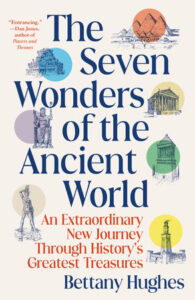 From The Seven Wonders of the Ancient World : An Extraordinary New Journey Through History’s Greatest Treasures by Bettany Hughes. Copyright © 2024. Excerpted by permission of Vintage Books , a division of Penguin Random House LLC. All rights reserved. No part of this excerpt may be reproduced or reprinted without permission in writing from the publisher.  Bettany HughesPrevious article, next article. 
Literary HubCreated by Grove Atlantic and Electric Literature Sign Up For Our Newsletters How to Pitch Lit Hub Advertisers: Contact Us Privacy Policy Support Lit Hub - Become A Member Become a Lit Hub Supporting Member : Because Books MatterFor the past decade, Literary Hub has brought you the best of the book world for free—no paywall. But our future relies on you. In return for a donation, you’ll get an ad-free reading experience , exclusive editors’ picks, book giveaways, and our coveted Joan Didion Lit Hub tote bag . Most importantly, you’ll keep independent book coverage alive and thriving on the internet.  Become a member for as low as $5/month  |
IMAGES
VIDEO
COMMENTS
BOOK REVIEW. An action-packed adventure ride - Indiana Jones, eat your heart out! Everything I've read from Matthew Reilly to date (Ice Station, Area 7, Scarecrow, Hover Car Racer) has just been so enjoyable to read, and Seven Ancient Wonders was no exception.In this, the first novel in his Jack West Jr. Series, he has created a wonderfully odd bunch of protagonists that you can't help ...
Seven Ancient Wonders. It is the biggest treasure hunt in history with contesting nations involved in a headlong race to locate the Seven Wonders of the Ancient World. 4500 years ago, a magnificent golden capstone sat at the peak of the Great Pyramid of Giza. It was a source of immense power, reputedly capable of bestowing upon its holder ...
The Six Sacred Stones. Seven Ancient Wonders ( Seven Deadly Wonders in the United States) is a book written by Australian author Matthew Reilly in 2005. Its sequel, The Six Sacred Stones was released in the autumn of 2007. The final novel in the series (book 7), The One Impossible Labyrinth, was released in Australia on October 12, 2021.
Each of the seven pieces of the capstone were hidden by Alexander the Great or one of his generals after it was removed from the Great Pyramid. The Seven Ancient Wonders were the hiding places of each piece. Now, with six of the seven wonders now lost, the race is on to locate the remains of the wonders and each part of the capstone they hide.
Since Seven Ancient Wonders in 2005, Matthew's novels have been the biggest selling new fiction title released in Australia for that year. Matthew has also written several short stories, including Roger Ascham and the King's Lost Girl, a special free prequel to The Tournament which is available online. Other short stories include Time Tours ...
Bestselling author Matthew Reilly takes you on a thrilling treasure hunt in Seven Ancient Wonders.It is the biggest treasure hunt in history with contesting nations involved in a headlong race to locate the Seven Wonders of the Ancient World.4500 years ago, a magnificent golden capstone sat at the peak of the Great Pyramid of Giza. It was a source of immense power, reputedly capable of ...
Seven Ancient Wonders. Paperback - January 1, 2010. by Matthew Reilly (Author) 4.3 2,308 ratings. Book 1 of 7: Jack West, Jr. See all formats and editions. It is the biggest treasure hunt in history with contesting nations involved in a headlong race to locate the Seven Wonders of the Ancient World. 4500 years ago, a magnificent golden ...
Synopsis. Bestselling author Matthew Reilly takes you on a thrilling treasure hunt in Seven Ancient Wonders. It is the biggest treasure hunt in history with contesting nations involved in a headlong race to locate the Seven Wonders of the Ancient World. 4500 years ago, a magnificent golden capstone sat at the peak of the Great Pyramid of Giza.
It is the biggest treasure hunt in history with contesting nations involved in a headlong race to locate the Seven Wonders of the Ancient World. 4500 years ago, a magnificent golden capstone sat at the peak of the Great Pyramid of Giza. It was a source of immense power, reputedly capable of bestowing upon its holder absolute global power. But then it was divided into seven pieces and hidden ...
Thousands of years ago, a magnificent golden capstone sat atop the Great Pyramid of Giza. It was a source of immense power, capable of bestowing upon its holder absolute global rule for a thousand years... But then, in 323 BC, the capstone was broken into seven pieces and hidden within the Seven Ancient Wonders of the World. Now the time has come to rebuild the capstone.
Book Review: Seven Ancient Wonders - Matthew Reilly. Author: Sanjana Mahanta. May 10, 2021. There is a recurring theme in most Hollywood movies that you can count on. It seems to be very popular for some reason and they also seem to attract the big names in the industry with all the big money. I've tried to understand why it is so, but so far ...
So in prep for the release of The Four Legendary Kingdoms by Matthew Reilly, I decided to re-read his Jack West novels (starting with Seven Ancient Wonders) and refresh my memory. Holy jesus was it refreshed. Back when I was in year 8 (about five years ago) I had my first taste of Matthew Reilly and Jack West - and fuck me I was hooked so bad.
535 pages. It is the biggest treasure hunt in history with contesting nations involved in a race to locate the Seven Wonders of the Ancient World. Exactly 4500 years ago, a gold capstone, a source of immense power, was divided into seven pieces and hidden within the seven greatest structures of the age. It is now time to locate the seven pieces.
Underlying Hughes' fascinating tour of the Seven Wonders of the World, a list compiled in the second century B.C.E, are questions about the nature of wonder itself: "why we wonder, why we create, why we choose to remember the wonder of others.". Devoting a chapter to each, Hughes, author of Istanbul and Helen of Troy, describes in rich ...
Seven Ancient Wonders. Hardcover - Unabridged, 6 January 2006. by Matthew Reilly (Author) 4.4 2,104 ratings. Book 1 of 7: Jack West, Jr. See all formats and editions. It is the biggest treasure hunt in history with contesting nations involved in a headlong race to locate the Seven Wonders of the Ancient World. 4500 years ago, a magnificent ...
What you will—and won't—find in this book. Educational Value. Kids will be introduced to the Seven Wonders of th. Positive Messages. Trust, teamwork, bravery and believing in yourself. Positive Role Models. Jack feels like the underdog next to his high-achi. Violence & Scariness.
Book Reviews My Seditious Heart: Collected Non-Fiction: Roy's vision of an earthy, utopian eco-friendly anarchism Author Kevin Barry: 'I take cookbooks into bed and slobber over pictures of ...
Seven Ancient Wonders is a roller coaster ride that almost never stops for a breath. One of a seven-book series with excellent characters that twists & turns on every page. ... Top reviews from other countries Translate all reviews to English. Lise larabie. 5.0 out of 5 stars Reading the book now. Reviewed in Canada on March 26, 2023. Verified ...
In a few months, he's going to die. Jack needs to find seven magic loculi that, when combined, have the power to cure him. The loculi are the relics of a lost civilization and haven't been seen in thousands of years. Because they're hidden in the Seven Wonders of the Ancient World. 368 pages, Hardcover. First published February 5, 2013.
Synopsis. Bestselling author Matthew Reilly takes you on a thrilling treasure hunt in Seven Ancient Wonders. It is the biggest treasure hunt in history with contesting nations involved in a headlong race to locate the Seven Wonders of the Ancient World. 4500 years ago, a magnificent golden capstone sat at the peak of the Great Pyramid of Giza.
I received this book to review at no cost, from the publisher Hachette. It's out now (trade paperback, $34.99). ... Sure, I expected a book on the seven wonders of the ancient world, but this book was pretty special. We didn't just get the 7 monuments -- we got an extensive historical context leading up to and far beyond the building and the ...
The Colossus Rises is the*first installment of the bestselling five-book series chronicling the story of Jack McKinley, an ordinary kid with an extraordinary problem. In a few months, he's going to die-unless he finds seven magic Loculi that have been hidden in the Seven Wonders of the Ancient World.
Wunder, Old English "A marvelous thing, miracle, object of astonishment." *Article continues below In 1303 CE, a monstrous earthquake ripped through the Eastern Mediterranean. The trauma shook glittering casing stones loose from the Great Pyramid at Giza in Egypt—the most ancient of our Seven Wonders—and brought the remains of the youngest, the towering Pharos Lighthouse […]
"A lively exploration of the ancient world, this fascinating book is brimming with stories of people and places, all told with Bettany's natural sense of wonder and adventure." —Simon Sebag Montefiore, New York Times bestselling author of The World: A Family History of Humanity "Bettany Hughes is the most perfect tour guide I know. Her boundless enthusiasm, clarity and learning ...